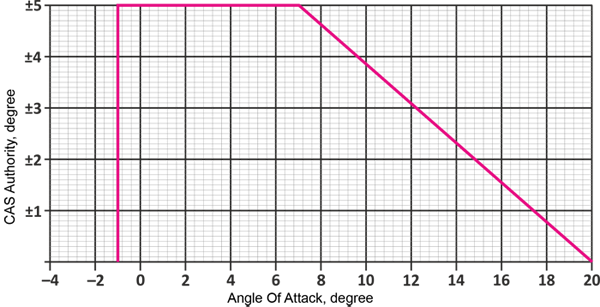从1970年到21世纪初,F-15被认为是美国最伟大的战斗机。F-15C是一架纯粹的战斗机。它拥有杰出的表现,取得超过100次的空战胜利,且未遭受任何确认的损失。DCS怒火危崖: F-15C包括专业水平的飞行模型、精细的6自由度的驾驶舱、高度精确的机体模型和音效。
作为怒火危崖系列,DCS怒火危崖: F-15C侧重于易操作性,而无需复杂的驾驶舱互动。这样可以显著降低学习难度。因此,DCS怒火危崖: F-15C提供基于键盘和操纵杆的专注于任务的驾驶舱系统的相关指令。
To maintain optimal center of gravity, the sensor in tank 1 prevents additional fuel from reaching external tanks until fuel level in tank 1 reaches at least 1,560 pounds.
Putting the SLIPWAY switch into the OPEN position shuts off tank 1 transfer pump, opens the slipway door, and depressurizes external fuel tanks (if there is no FUEL LOW condition).
If the switch is left in OPEN position on the F-15C, the fighter may develop unstable forward center of gravity.
Control surfaces consist of traditional ailerons, rudders and two stabilizers which can move symmetrically or differentially. Control surfaces are driven by hydraulic actuators. Actuators receive control signals from hydro-mechanical and electrical systems, as well as the Control Augmentation System or CAS.
The CAS is essentially a hydro-mechanical system that transfers pilot and autopilot input to control surfaces. It uses 3 basic flight controls: control stick for pitch and roll control, two rudder pedals for yaw control, and the throttle for thrust control.
The system deflects control surfaces according to roll, pitch and yaw angular velocity, G forces, and angle of attack.
The main purpose of this system is to increase control input accuracy amd to improve control surface response.
CAS does not respond to sheer stick and pedal movement, but rather to the force applied to them. Therefore the aircraft remains flyable even in case of a mechanical malfunction. The plane can be controlled by using only the mechanical control system, or purely by Control Augmentation System's sensors on the control stick.
CAS control of the roll axis is connected to the differential stabilizer. Maximum manual deflection of the ailerons is adjusted depending on airflow, dynamic pressure, altitude, as well as control stick position.
CAS receives a pitch channel signal from the flight control stick, which is then converted into an electrical signal transmitted to the stabilizer, deflecting it by up to +/-10° at around 3,75 lb of force for each G. As soon as the plane begins to react and G forces begin to increase, the Pitch CAS Channel monitors compares actual G value with the target value and uses the hydro-mechanical control system to dampen excessive G forces.
At angles of attack of over 20°, Pitch CAS Channel does not deflect the stabilizer at all. Only the damper is then utilized, which helps avoid stalls. Pitch control at high angles of attack is therefore slightly less precise.


Roll CAS channel receives flight control stick input and converts into an electrical signal that is transmitted to the stabilizer. The Roll CAS Channel in conjunction with the hydro-mechanical system allows the pilot to maintain high roll rate in a wide range of flight conditions while dampening any oscillations that may arise. Stabilizer deflection angle varies based on indicated airspeed and angle of attack.
Yaw CAS Channel essentially acts as a damper along the yaw axis, while pilot input with rudder pedals further deflects the rudder to +/-15° when needed in cases such as asymmetric weight distribution or engine or flap failure.
Unlike the Aileron Rudder Interconnect (ARI), the yaw CAS Channel continues to work at supersonic speeds, preventing unwanted slip as the aircraft rolls.
Enabling the ATT HOLD mode on the control panel (Press the [A] key on your keyboard to put the switch in the ON position), tells the autopilot to hold the current attitude in the following range: +/-45° of pitch, and +/-60° of roll.
The mode will turn off automatically if one of the following events occur:
Enabling the ALT HOLD mode on the control panel (Press the [H] key on your keyboard to put the switch in the ON position), tells the autopilot to note the current barometric altitude and continue to maintain it.
Reaching more than +/-60° of roll will disable the ALT HOLD mode; however the ALT HOLD switch remains in the ON position.
The mode will automatically turn off when vertical velocity exceeds 2,000 feet per minute.
The F-15 features a takeoff position control trim feature. When the T/O Trim button is pressed on the CAS panel, the flight control stick and pedals move to the preset take-off position. The T/O TRIM indicator will illuminate.
Flight control stick take-off position means a slight deviation to pitch.
When the button is depressed, the indicator light will turn off.
The F-15's hydro-mechanical control system uses mechanical and hydraulic actuators to deflect control surfaces.
This device regulates force transferred from the flight control stick to actual stabilizer deviation. The main goal of the system is to provide the same G force for stick travel throughout the flight envelope.
The Pitch Ratio algorithm is based on Mach number and altitude, and is generally very reliable at all altitudes and airspeeds.
However, some excessive amount of G may be felt during rapid deceleration. There may also be increased sensitivity in low altitude / high airspeed conditions, and decreased sensitivity at very low airspeeds.
The Pitch Ratio reaches its maximum at low speeds at all altitudes, and minimum at high speeds and low and medium altitudes.
This device regulates force transferred from the flight control stick to both differentially stabilizer and ailerons. The devices provides higher roll rates at lower airspeeds, and limits roll rate at high speed, preventing damage to the airframe.
This device is designed to prevent excessive yaw when the aircraft rolls. It creates a mechanical connection between the ailerons and the rudders.
It is worth noting that F-15's rudders have a rather large surface area. They are exposed to significant force during lateral movement, such as when rolling the aircraft, and the force will often work to create noticeable yaw. In some cases the airframe may even create an opposite reaction to moving the control stick in the roll axis.
The ARI algorithm is simple. For positive angles of attack (pulling the flight control stick) and moving the stick to the right, the rudder is also deflected to the right, working to minimize yaw. For negative angles of attack (pushing the stick) when moving the stick to the right, the rudder is deflected to the left, preventing backlash roll.
With more stick deflection (up or down) at lower speeds and greater positive or negative angles of attack, the more deflection is applied to the rudder, reaching its maximum when the flight control stick is pushed to the mechanical limit.
The rudder has several full deflection positions that depend on airspeed, and the rudder pedal and control stick input.
+/- 15 degrees when below 1.5M by pedals
+/- 5 degrees when above 1.5M by pedals
+/- 30 degrees, ARI output when flight control stick is fully deflected to maximum position both down (towards the pilot) and fully left or right.
The ARI is disabled at speeds about Mach 1.
The PTC system is designed to ease pilot workload by maintaining steady pitch in changing flight conditions, such as during changes in airspeed due to increase or decrease in engine RPM, opening the air brake or flaps, using weapons, or jettisoning external stores.
The system's G force sensor responds to changes in G, while the system's force sensor responds to force applied to the control stick. If the stick remains static due to being trimmed in the neutral position, or held static by pilot, the PTC automatically deflects the stabilator to compensate for change in G.
For example: let's consider an F-15 in horizontal flight experiencing steady 1G. Dropping flap or moving the throttle will upset aircraft trim, therefore disrupting the G load. The PTC will sense the change in flight conditions and compensate by moving the stabilator, returning the aircraft to level 1G flight.
The PTC is disabled whenever the landing gear is down. This ensures that the pilot feels the change in the aircraft balance during landing. The pilot can then properly sense the change in aircraft attitude based on airspeed and control input, which is negated when using PTC. However, when performing any other in-flight maneuvers, the system creates a more comfortable piloting environment by adjusting aircraft attitude as conditions change.
F-15's trim controls consist of two parts: manual and automatic. Pilot controls manual trim via the corresponding controls on the flight stick.








